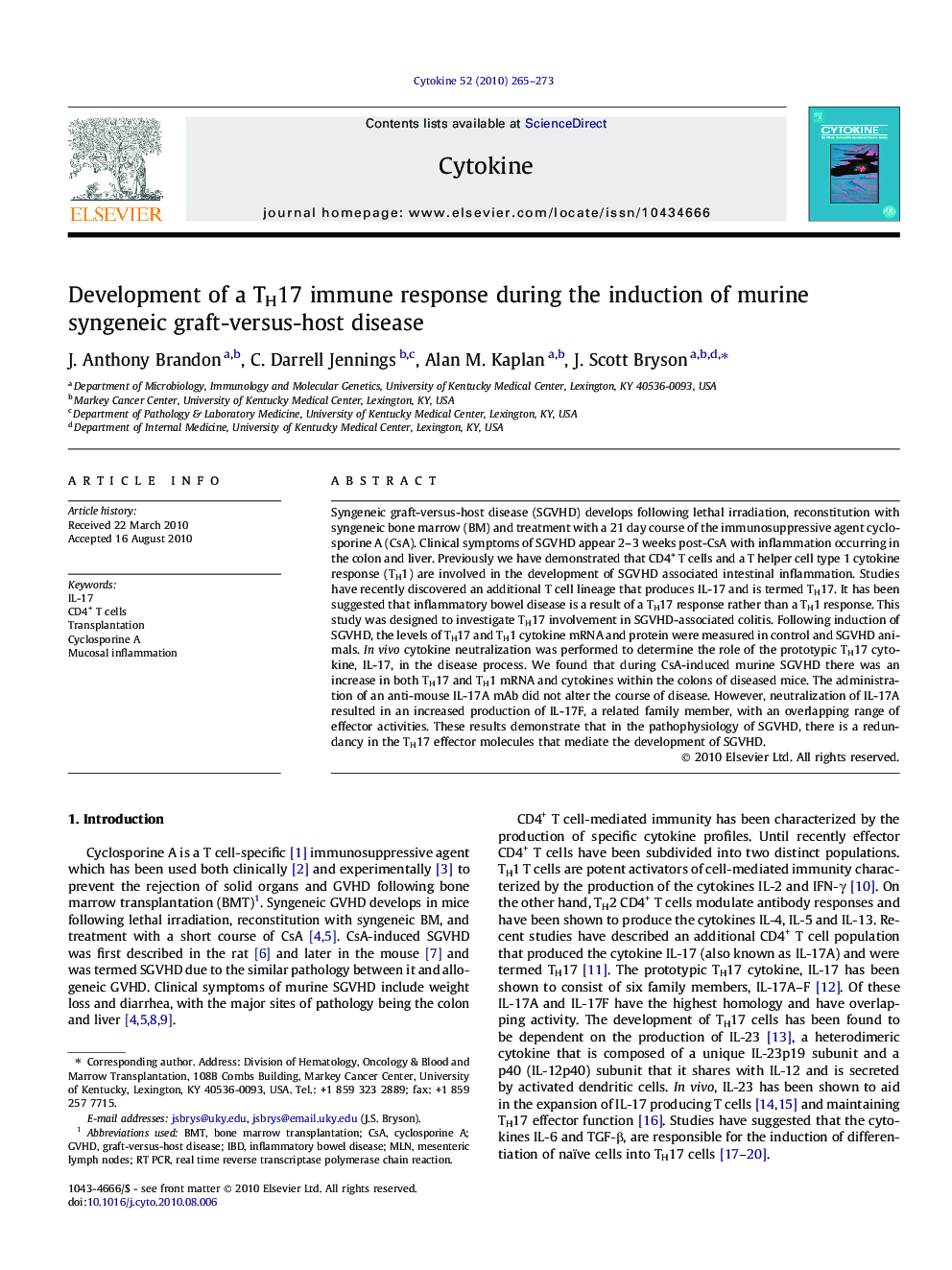| Article ID | Journal | Published Year | Pages | File Type |
|---|---|---|---|---|
| 2794849 | Cytokine | 2010 | 9 Pages |
Syngeneic graft-versus-host disease (SGVHD) develops following lethal irradiation, reconstitution with syngeneic bone marrow (BM) and treatment with a 21 day course of the immunosuppressive agent cyclosporine A (CsA). Clinical symptoms of SGVHD appear 2–3 weeks post-CsA with inflammation occurring in the colon and liver. Previously we have demonstrated that CD4+ T cells and a T helper cell type 1 cytokine response (TH1) are involved in the development of SGVHD associated intestinal inflammation. Studies have recently discovered an additional T cell lineage that produces IL-17 and is termed TH17. It has been suggested that inflammatory bowel disease is a result of a TH17 response rather than a TH1 response. This study was designed to investigate TH17 involvement in SGVHD-associated colitis. Following induction of SGVHD, the levels of TH17 and TH1 cytokine mRNA and protein were measured in control and SGVHD animals. In vivo cytokine neutralization was performed to determine the role of the prototypic TH17 cytokine, IL-17, in the disease process. We found that during CsA-induced murine SGVHD there was an increase in both TH17 and TH1 mRNA and cytokines within the colons of diseased mice. The administration of an anti-mouse IL-17A mAb did not alter the course of disease. However, neutralization of IL-17A resulted in an increased production of IL-17F, a related family member, with an overlapping range of effector activities. These results demonstrate that in the pathophysiology of SGVHD, there is a redundancy in the TH17 effector molecules that mediate the development of SGVHD.
